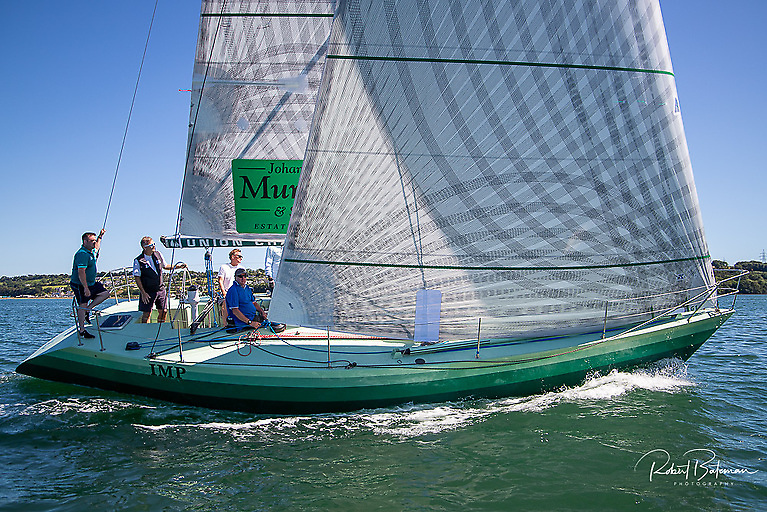Displaying items by tag: Galateia
No Slowing Down for Cork Supercrew Justin Slattery as Newport Bermuda Race Kicks Off Packed Calendar for Second Half of 2022
2022 has been a busy year so far for Ireland’s top offshore racer Justin Slattery — and it’s not slowing down anytime soon.
While the double Volvo Ocean Race champion crewman won’t be taking part in this weekend’s Round Ireland Race, that’s only because he’s starting the Newport Bermuda Race later this week (follow the race tracker when it gets under way this Friday 17 June).
As regular Afloat readers know, the Cork man was on Rán when it won the UK IRC Nationals on the Solent this past weekend.
 Smiles all round for the team on Niklas Zennström's Carkeek FAST40+ Rán (including Ireland's Justin Slattery, fourth from left) after winning the 2022 IRC National Championship + class victory in IRC One Photo: Rick Tomlinson
Smiles all round for the team on Niklas Zennström's Carkeek FAST40+ Rán (including Ireland's Justin Slattery, fourth from left) after winning the 2022 IRC National Championship + class victory in IRC One Photo: Rick Tomlinson
It was just the latest in a series of stellar results that started in January with victory — and a new record — in the RORC Transatlantic Race with the super-maxi Comanche.
The following month, Comanche with Slattery on deck came second overall in the Caribbean 600.
Staying in the West Indies, he joined the crew of the world’s largest carbon composite sailing yacht, Hetairos, setting a new monohull record in early March’s Round Antigua Race and defending the St Barths Bucket title a few weeks later.
 Comanche won the IMA Trophy and set a new race record after arriving in Grenada in record time | Credit: James Mitchell/RORC
Comanche won the IMA Trophy and set a new race record after arriving in Grenada in record time | Credit: James Mitchell/RORC
Crossing the Atlantic, Slattery was part of the winning crew of the WallyCento yacht Galateia at Mallorca’s PalmaVela regatta last month — and more recently was back on Rán, Niklas Zennström’s FAST40+, as it dominated the fleet at the RORC Vice Admiral’s Cup.
Slattery’s calendar for the rest of 2022 looks just as packed. Following the Newport Bermuda Race, he returns to Palma at the end of June for the Superyacht Cup to compete on the J Class entry Ranger.
He’ll be on board Rán Racing’s TP52 for the Channel Race in July, as well as the Rolex Middle Sea Race in October.
August brings Hamilton Island Race Week, where he’ll join the crew of Andoo — the new name of the 100-footer Comanche. Andoo is also scheduled for the year-ending Rolex Sydney Hobart Yacht Race.
And in September he’s back in the Mediterranean on Galateia for both the Maxi Yacht Rolex Cup at Porto Cervo, Sardinia and Les Voile de St Tropez in early October.
With his performances so far and an epic rest of the year lined up, January’s Sailor of the Month (International) will surely be a regular feature on these (web) pages over the months to come.























































